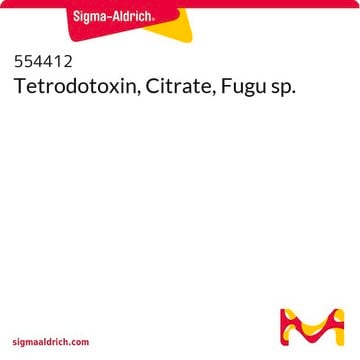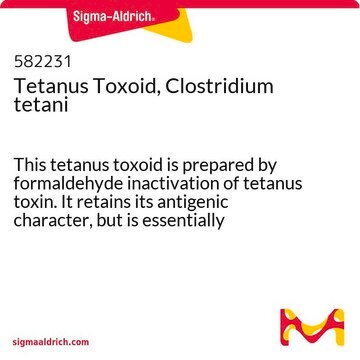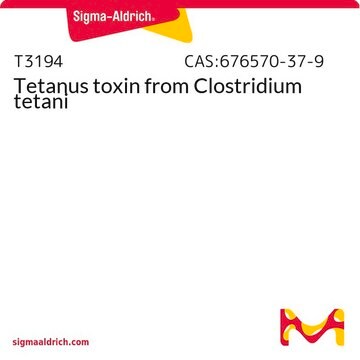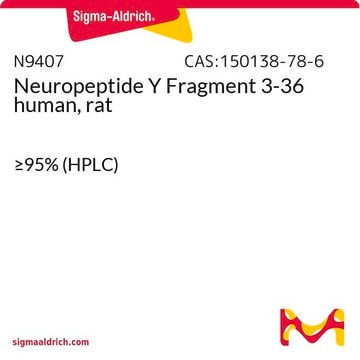T8024
Tetrodotoxin
≥98% (HPLC), powder
Synonym(s):
Fugu poison, Maculotoxin, TTX, Tarichatoxin
About This Item
Recommended Products
Assay
≥98% (HPLC)
form
powder
color
white
solubility
dilute citrate or acetate buffer: 1 mg/mL (dissolve at pH 4-5. Aqueous solutions, pH 4-5, are stable if stored frozen.)
strong acid or alkaline solutions: unstable (destroyed by boiling at pH 2.)
storage temp.
2-8°C
SMILES string
[H][C@]12OC3(O)OC(C4[C@@H](O)NC(=N)NC4([C@@H]1O)[C@@H]3O)[C@@]2(O)CO
InChI
1S/C11H17N3O8/c12-8-13-6(17)2-4-9(19,1-15)5-3(16)10(2,14-8)7(18)11(20,21-4)22-5/h2-7,15-20H,1H2,(H3,12,13,14)/t2?,3-,4?,5+,6-,7+,9+,10?,11?/m1/s1
InChI key
CFMYXEVWODSLAX-IXUBDLNJSA-N
Gene Information
rat ... Scnn1g(24768)
Looking for similar products? Visit Product Comparison Guide
Application
Biochem/physiol Actions
Preparation Note
Signal Word
Danger
Hazard Statements
Precautionary Statements
Hazard Classifications
Acute Tox. 1 Oral
Storage Class Code
6.1B - Non-combustible acute toxic Cat. 1 and 2 / very toxic hazardous materials
WGK
WGK 3
Personal Protective Equipment
Regulatory Listings
Regulatory Listings are mainly provided for chemical products. Only limited information can be provided here for non-chemical products. No entry means none of the components are listed. It is the user’s obligation to ensure the safe and legal use of the product.
JAN Code
T8024-BULK:
T8024-1MG:
T8024-VAR:
Certificates of Analysis (COA)
Search for Certificates of Analysis (COA) by entering the products Lot/Batch Number. Lot and Batch Numbers can be found on a product’s label following the words ‘Lot’ or ‘Batch’.
Already Own This Product?
Find documentation for the products that you have recently purchased in the Document Library.
Customers Also Viewed
Our team of scientists has experience in all areas of research including Life Science, Material Science, Chemical Synthesis, Chromatography, Analytical and many others.
Contact Technical Service












